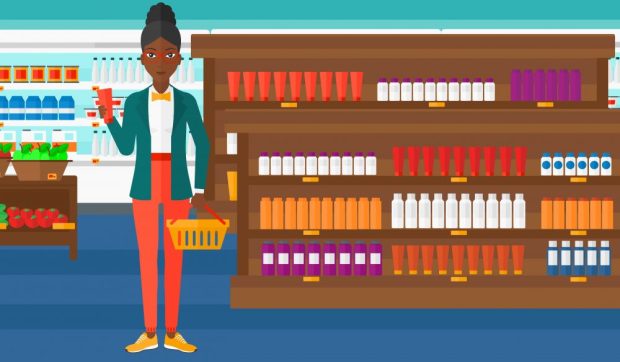Grocery Tracker: Time Crunch

All’s quiet on the grocery front this week as there wasn’t much net movement across tracked grocery stocks.
Kroger fell into a bit of a hole midweek, though Thursday and Friday morning trading worked to pull it back out, with price per share at the time of writing at $33.55, up 0.18 percent from Thursday’s close. Ahold Delhaize also saw movement upward during Friday’s trading after spending the week down — trading at €20.23 on Friday afternoon.
Costco was the only grocery stock tracked that saw major changes this week, as value spiked up on Thursday and even higher on Friday, rising from an average of around $167 at the beginning of the week to hit a high of $171.65 on Friday morning. At the time of writing, Costco sat at $171.14.
Whole Foods also saw values rise late in the week, hitting $30.80 on Friday morning and trending upward, though this only puts WFM back up to similar values seen at the end of January.
In acquisition news, Kroger recently announced its acquisition of iconic New York City-based cheese shop Murray’s Cheese. The two have yet to disclose the financial terms of the deal, but city records show that Kroger dropped $20.6 million last month to purchase the retail condo housing Murray’s flagship store, affiliated classrooms, as well as its catering and event operations.
Established in 1940, Murray’s Cheese employs some 200 people in its flagship location, along with its Grand Central Terminal location, its Greenwich Village restaurant and shipping and eCommerce operations in Long Island City.
Murray’s Cheese and Kroger have been partners for nearly a decade, with the national grocer selling the cheese shop’s products in its supermarkets. The outposts are designed to mimic Murray’s flagship store. Kroger reportedly became a minority owner in Murray’s Cheese back in 2012.
Murray’s former owner, Rob Kaufelt, will reportedly remain as a strategic adviser, and the team leading the New York City operation will largely remain unchanged. Kroger said it doesn’t intend to change much in Murray’s Cheese’s flagship store, other than lowering prices in line with the supermarket giant’s larger purchasing ability.
For Kroger, the hope is to draw more selective, niche-minded customers with its investments in specialty items — one of the many strategies the store is employing to combat the eCommerce onslaught.
Kroger is thinking ahead, hoping to hold onto its number one spot as even groceries are getting digital. In late 2016, Kroger began testing sensor and analytics technology to let shelves and products interact with shoppers. The systems are designed to reach out and ping customers on their mobile devices, a move to personalize and optimize the in-store grocery experience for consumers.
In-store transformation will increasingly become key for grocery retailers in the coming years to compete with growing consumer interest in online food sales. The reality of this is especially apparent in the recent numbers from a combined Food Marketing Institute (FMI) and Nielsen study that puts as many as 70 percent of U.S. consumers in the arms of online grocers by 2025 — purchases that the study suggests will value over $100 billion.
All told, this means that online grocery purchases will constitute a 20 percent share of consumer food and beverage spending — about five times the current level — in less than a decade.
“Combine this with the fact that technology will continue to improve over that time,” the report said, “and it’s foreseeable that this growth may happen much quicker.”
Currently, the FMI/Nielsen report found that some 23 percent of households in the U.S. bought groceries online in 2016, up from 19 percent of households in 2014. Online grocery sales in 2016 represent about 4.3 percent of U.S. consumer retail food and beverage spending.
The rates were considerably higher among millennial consumers (go figure). Some 28 percent of millennial consumers purchased groceries online in 2016, up from 21 percent in 2014.
For brick-and-mortar grocers, time may be running out to boost eCommerce presence or in-store tech. Research conducted by NPD Group indicates that the shift to online grocery shopping is set for a boost in 2017 as the proportion of millennial and Gen Z grocery customers grows.
“Now is the time to start developing eCommerce programs or to expand your current services,” said Darren Seifer, NPD food and beverage industry analyst. “Whether a manufacturer or retailer, now is the time to act while shoppers are experimenting, and there is significant growth on the horizon.”
NPD puts the current online grocery shopping population in the U.S. at around 52 million today. The research projects that an additional 20 million new and lapsed consumers plan to join in within the next six months.
